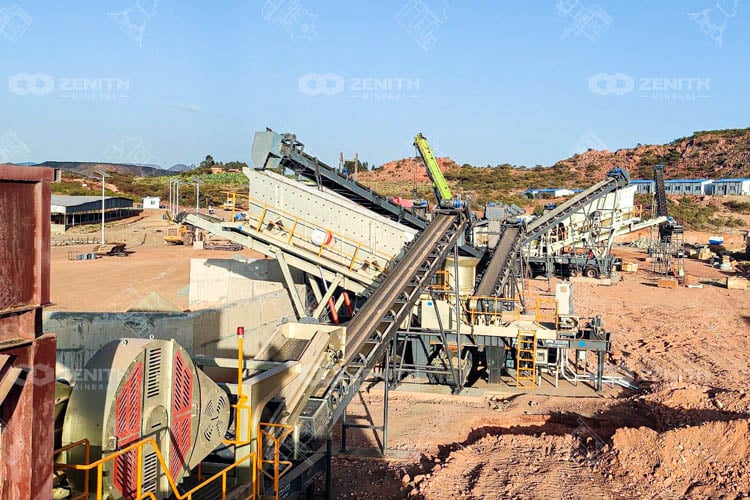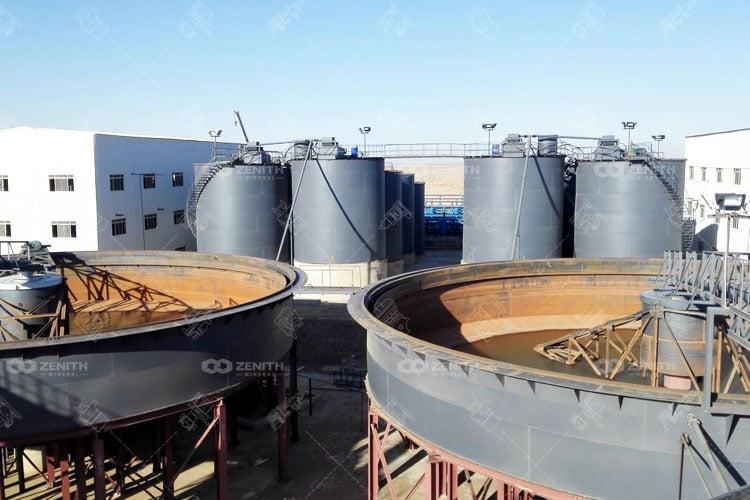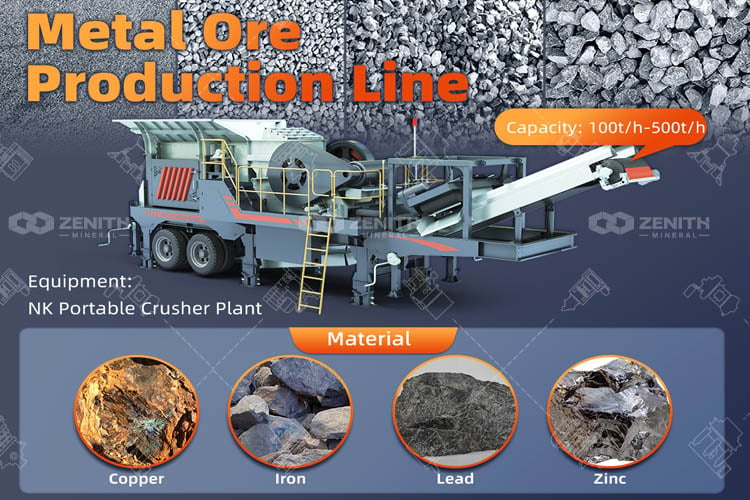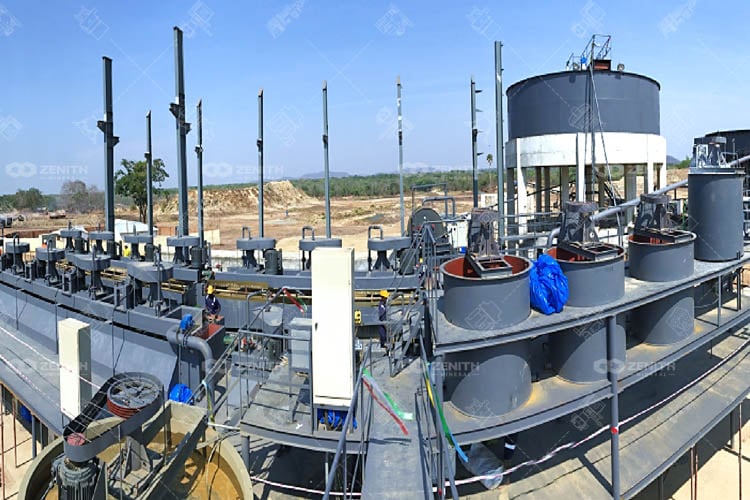Crushing is a fundamental step in the metal ore beneficiation process, serving as the initial phase of mineral processing that prepares the raw ore for subsequent treatment stages. The efficiency and effectiveness of crushing directly influence the overall performance of the beneficiation plant, impacting recovery rates, energy consumption, operational costs, and product quality. Given the complexity of metal ore deposits and the diversity of beneficiation techniques, understanding the role of crushing and optimizing its parameters is critical for successful metal extraction.

Metal ore beneficiation involves separating valuable metal minerals from gangue (worthless material) to produce concentrates with higher metal content. Common metal ores include iron, copper, gold, lead, zinc, nickel, and others. The beneficiation process typically includes several stages: crushing, grinding, classification, concentration (flotation, magnetic separation, gravity separation), and dewatering.
Crushing is the first physical processing step where large lumps of ore are reduced to smaller sizes manageable by grinding mills. Proper crushing ensures that the ore particles are of suitable size and liberation degree for efficient mineral separation.
Metal ore crushing is typically carried out in multiple stages to achieve the desired particle size distribution:
The choice of crusher depends on ore hardness, abrasiveness, moisture content, feed size, desired product size, and plant capacity.
The primary function of crushing is to reduce the size of the raw ore. Raw metal ores are usually mined in large lumps, which are not suitable for further processing in subsequent stages such as grinding and separation. By crushing the ore, its size is decreased to a more manageable range. For example, in a copper - ore dressing plant, the initial raw ore may be several hundred millimeters in diameter. After a series of crushing stages, the ore size can be reduced to a few tens of millimeters or even smaller. This size reduction is essential for the subsequent grinding operation.
In grinding, the crushed ore is further reduced to a fine powder to expose the valuable metal minerals. If the ore is not properly crushed before grinding, the grinding process will be less efficient, consuming more energy and time.
Crushing also plays a significant role in the liberation of valuable metal minerals from the gangue (waste rock). During the crushing process, the mechanical forces applied to the ore break the rock matrix, separating the valuable minerals from the surrounding gangue.
This liberation is a prerequisite for the effective separation of valuable minerals in subsequent separation processes such as flotation, magnetic separation, and gravity separation. For instance, in gold - ore dressing, the gold particles are often embedded in quartz or other gangue minerals. Crushing helps to break the ore into smaller pieces, increasing the probability of gold particles being exposed and thus facilitating their separation from the gangue.
Before the ore enters the main ore - dressing operations, it is necessary to characterize its properties, such as mineral composition, particle - size distribution, and physical and chemical properties. Crushing the ore to a suitable size makes it easier to take representative samples for analysis.
These samples can then be used to determine the optimal ore - dressing process parameters, such as the type and dosage of flotation reagents, the grinding fineness, and the separation conditions. Accurate ore characterization is crucial for maximizing the recovery of valuable minerals and minimizing the loss of resources.
As mentioned earlier, crushing is a pre - treatment for grinding. The quality of the crushed ore directly affects the performance of the grinding operation. A well - crushed ore with a proper particle - size distribution can reduce the energy consumption of the grinding process. When the ore is crushed to a smaller size, the grinding mill does not need to apply as much force to further reduce the particle size. This results in lower power consumption and longer service life of the grinding equipment. Moreover, a more uniform particle - size distribution of the crushed ore can lead to a more consistent grinding product, which is beneficial for subsequent separation processes.
The separation processes in metal - ore dressing, such as flotation, magnetic separation, and gravity separation, rely on the physical and chemical differences between valuable minerals and gangue. The crushing process affects these differences by altering the surface properties and particle - size of the ore. For example, in flotation, the surface area of the ore particles is an important factor. Crushing can increase the surface area of the ore particles, making it easier for the flotation reagents to adsorb on the surface of the valuable minerals. In magnetic separation, the size and shape of the particles can affect the magnetic response. A proper crushing process can ensure that the magnetic minerals are in a suitable form for effective separation.
Efficient crushing can lead to significant energy and cost savings in the ore - dressing process. By reducing the size of the ore before grinding, the energy consumption of the grinding process is decreased. Since grinding is one of the most energy - intensive operations in ore - dressing, this energy saving can have a substantial impact on the overall cost of production. Additionally, proper crushing can reduce the wear and tear of subsequent processing equipment, such as grinding mills and separators. This leads to lower maintenance costs and longer equipment life, further reducing the production cost.
A well - designed crushing system can increase the throughput of the entire ore - dressing plant. By efficiently reducing the size of the raw ore, the plant can process more ore per unit time. This increased throughput can lead to higher production volumes of valuable metal products, thereby increasing the economic benefits of the ore - dressing operation. For example, in a large - scale iron - ore dressing plant, improving the crushing efficiency can enable the plant to process more iron ore, resulting in a higher output of iron concentrate.
In recent years, significant progress has been made in crushing technology. High - efficiency crushers, such as cone crushers, jaw crushers, and impact crushers, have been developed. These crushers have higher crushing ratios, lower energy consumption, and better particle - size control compared to traditional crushers. For example, cone crushers use a combination of compression and shearing forces to crush the ore, resulting in a more uniform particle - size distribution.
Automation and process control technologies have also been widely applied in crushing operations. Advanced sensors and control systems can monitor and adjust the crushing process in real - time, ensuring optimal performance. For instance, sensors can be used to measure the particle - size distribution of the crushed ore, and the control system can adjust the operating parameters of the crusher accordingly to maintain the desired particle - size. This automation not only improves the efficiency of the crushing process but also reduces the labor intensity and human error.
Crushing is a critical and indispensable step in metal ore beneficiation, influencing the efficiency, cost, and success of the entire mineral processing operation. By understanding the objectives, equipment options, and challenges of crushing, mining engineers and plant operators can optimize crushing circuits to maximize metal recovery and minimize operational costs. Continuous technological advancements promise further improvements in crushing efficiency, contributing to sustainable and profitable mining operations.

CIL processing plants play a critical role in modern gold mining operations. The CIL (Carbon in Leach) is a hydrometallurgical technique used to extract gold from ore.

The NK Portable Crusher Plant is a powerful asset in the metal ore production line, offering a combination of high capacity, mobility, and advanced control systems.

Extraction methods for oxidized gold ore can be broadly categorized into four main processes:Non-Cyanide Extraction Methods, Cyanidation Extraction Method, Oxidized Gold Ore Sulfide Extraction Method, Oxidizing and Roasting Extraction Method.
Fill your requirements here, and we'll send the custmized solution and quotation to you by the reserved contact information.